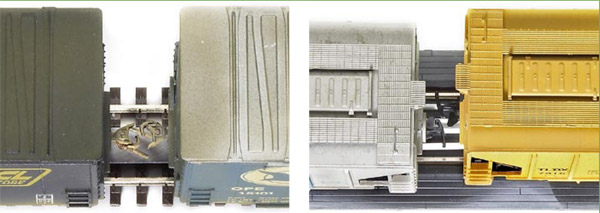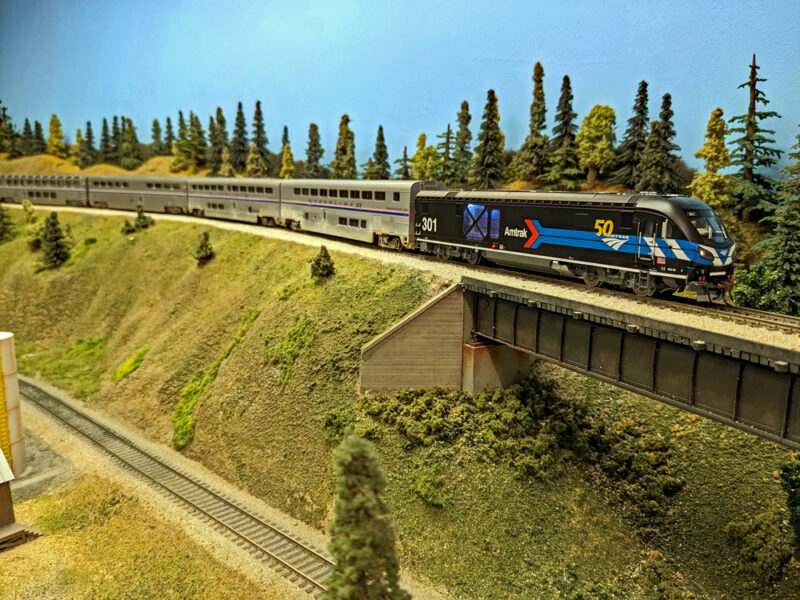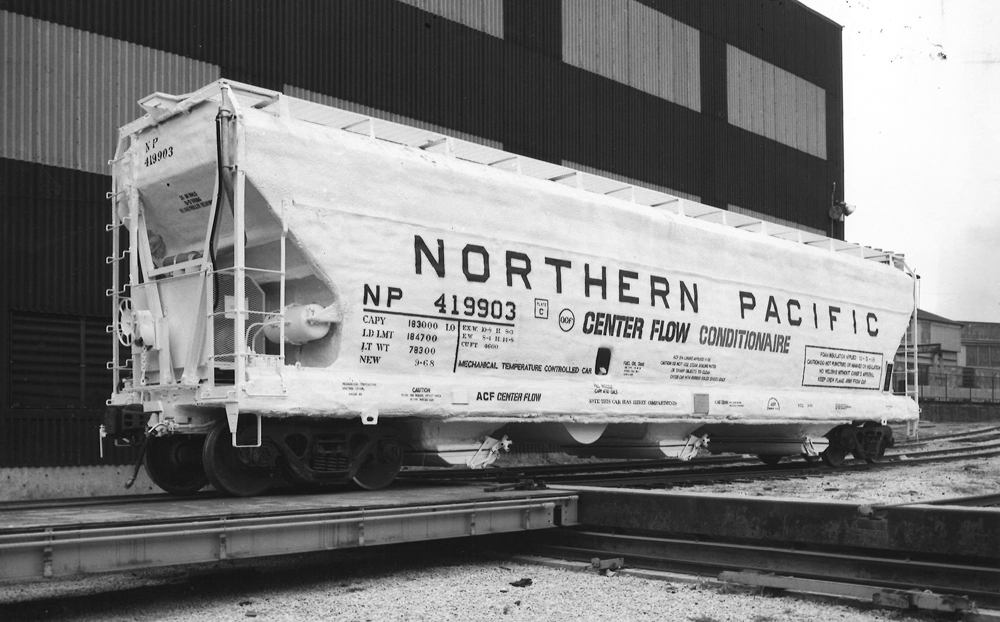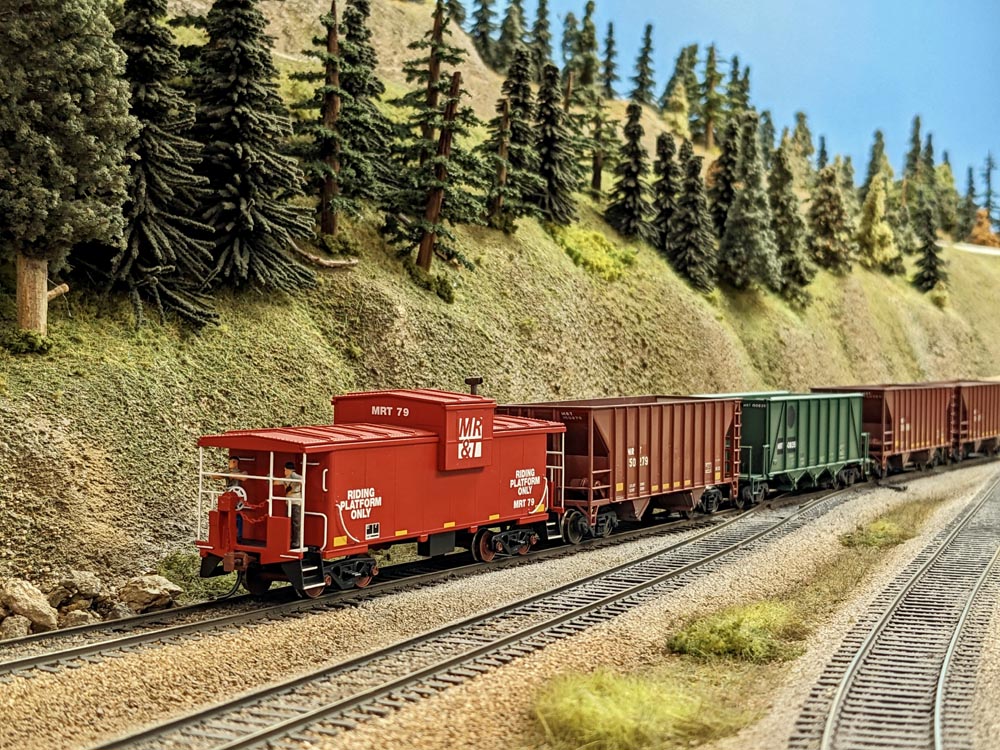In any hobby, or indeed in any field, there is terminology used as shorthand by those with experience in the hobby or field, to refer to things specific to that hobby. That terminology, though, can be a barrier to entry for the uninitiated. This article is intended to serve as a brief introduction to model locomotive and rolling stock terminology. – Ed.
Types of locomotives
Prototype steam engines were used for about 130 years, from the first railroads in the 1830s until the early 1960s. The first diesels appeared in the early 1930s and operated side-by-side with steamers on many railroads during the 1940s and early 1950s.
A wide variety of plastic and metal locomotive models is available today. These are generally offered as either ready-to-run models or as kits and are available in various scales. For steam engines, you can find models representing prototype engines built between 1870 and the 1940s. Diesel locomotives continue to be built, and highly detailed models of engines past and current are available from a number of manufacturers.
Electric locomotives were operated in the busy Northeast Corridor from Washington, D.C., to Boston, as well as on some mountain lines. Models of electric locomotives are also available.
Can and open-frame motors
The most common power source used in model locomotives is the can motor. These motors are completely enclosed and have a ring magnet that surrounds the armature. Can motors have smooth running characteristics and require a low current draw.
Older models will often have open-frame motors. On this type of motor the magnet is mounted at one end with iron pole pieces extending to each side of the armature. The armature is visible from the sides, giving the motor the open-frame name. While these motors operate well, they don’t start as smoothly as can motors do, and they draw two to three times more current.
Couplers

The magnetic knuckle coupler, as pioneered by Kadee, is the most widely used model railroad coupler. The coupler’s trip pin is made from a curved metal rod made to suggest an air hose. When the trip pin passes over a magnet under the track (called an uncoupling ramp), the rod is pulled to one side, opening the knuckle and uncoupling the cars.
Older models and inexpensive freight cars often have plastic horn-hook-style couplers, a design that’s disappearing today. These have a plastic pin on the bottom of the coupler. When the pin passes through a grooved or spring ramp, the couplers are forced apart and the cars separate. Horn-hook and magnetic couplers are not compatible.
Caboose
The caboose was the office for the conductor of a freight train and provided shelter for the train crew. A caboose typically offered a rough ride and little comfort to its crew. Those built through the early 1950s had smoky coal stoves used for heat in the winter. Because of the lack of comfort, crews often called cabooses “crummies.” Though no longer a common sight, cabooses are still used occasionally where special switching work requires one.
EOT
During the 1990s, the caboose was replaced with a small box called an end-of-train device (EOT or ETD). These mount on the coupler of the last car in a train and radio information to the locomotive cab about train-related data, such as brake-line air pressure. Some are equipped with a red flashing light.
Shorty
Full-length passenger car models (85 scale feet) can’t go around tight curves on layouts. With that in mind, several model manufacturers developed lines of shorty passenger cars that, at 60 to 72 scale feet in length, can navigate the tight curves on smaller layouts.














Jory there are ways of modifying hook horn coupler on truck or Taglo if I am correct. To coupler on car but requires some modifications like melting a 2-56 nut into body where truck snapped in or you can get round styrene stock in the diameter needed and glue it in then drill and tap it. Then glue a coupler box to the bottom of the car and install coupler as directed, kadee also makes special coupler that will go into coupler on truck to covert them, the former requires you to replace the trucks there is also a way to remove the coupler mount on the truck and reuse them mrr had an article on it I'm remembering right also check out youtube.com several modelers on there have videos about it. I used a soldiering iron to melt a 2-56 nut in to the hole and chased the threads with a tap, then installed a set of kadee sprung trucks. Removed the flange on the end of the car that represents the coupler box and glued a kadee coupler box on with superglue and installed a kadee wisker coupler coupler. Then set the coupler and trip pin height.
Just getting into modeling railroads, I have quite a few older rolling stock with plastic couplers, I'm wondering you can convert those to the newer magnetic type. If so, what's the best route to doing that? Thanks, Jory
To my understanding, Diesel's tend to be named according to individual manufacturer's designations rather than any particular configuration.
I understand the naming of steam locomotives (0-4-2) but I am really confused as to the naming of desiel engines. I see some pass by my house with trucks of 4 or 6 wheels. Other then that, can someone explain the naming of them for me?
I really learned some new facts about the couplers you use on the other side of the Atlantic. Thanks.
Dale-
Some basic info for you about locomotive trucks.
The only freight engines being built today have six axles, divided between two trucks. A three-axle truck with a traction motor on each axle is called a C, so such a locomotive is technically classified as a C-C. (I say technically because railfans and modelers, while they should be familiar with the term, rarely use it.)
A truck with two axles and motors is a B. The only B-B engines built since the late 1980s (I think) have been switchers and passenger units for Amtrak and commuter lines. The last B-B freight units were EMD's GP60 and the B40[something] from GE. There are still LOTS of these and older four-axle engines running around out there, though, on both the class 1 and small railroads.
Two other types you should know, although you won't see them running around any more, are the D and the A1A. As you can probably guess, the D truck has four axles and motors. There is only one engine so equipped still in service today: UP 6936, which is now designated part of their historic locomotive fleet. The A1A has three axles, but the center is an idler, present only to spread out the weight of the engine (and/or improve the ride). The most common models these were on were EMD's E series, the last bastion of which pulled commuter trains on BN out of Chicago until they were replaced by exceptionally ugly F40PH-2Ms. Canadian National has four (I think) Es in executive service, and Union Pacific has an ABA set of them.
(Okay, to be extremely technical, the latest units built by GE for BNSF aren't really C-Cs, they're A1A-A1As that have a mechanism to lift the center axle off the rail to boost tractive effort in certain conditions, thus changing into B-Bs. However, unless you know exactly what to look for (I don't), they still appear to be standard C-Cs, so don't sweat it.)
I hope this is helpful.
David